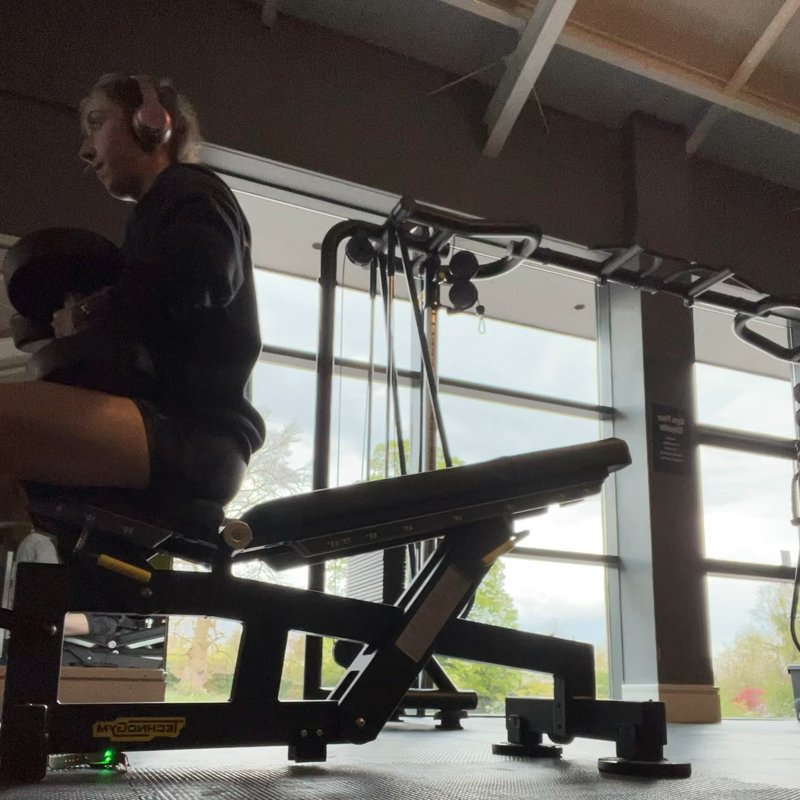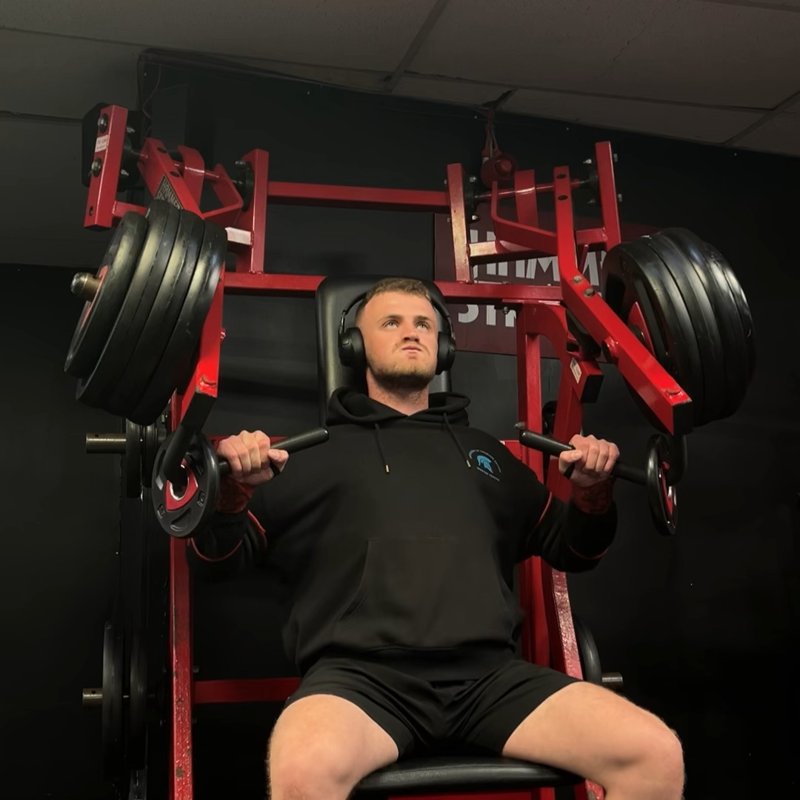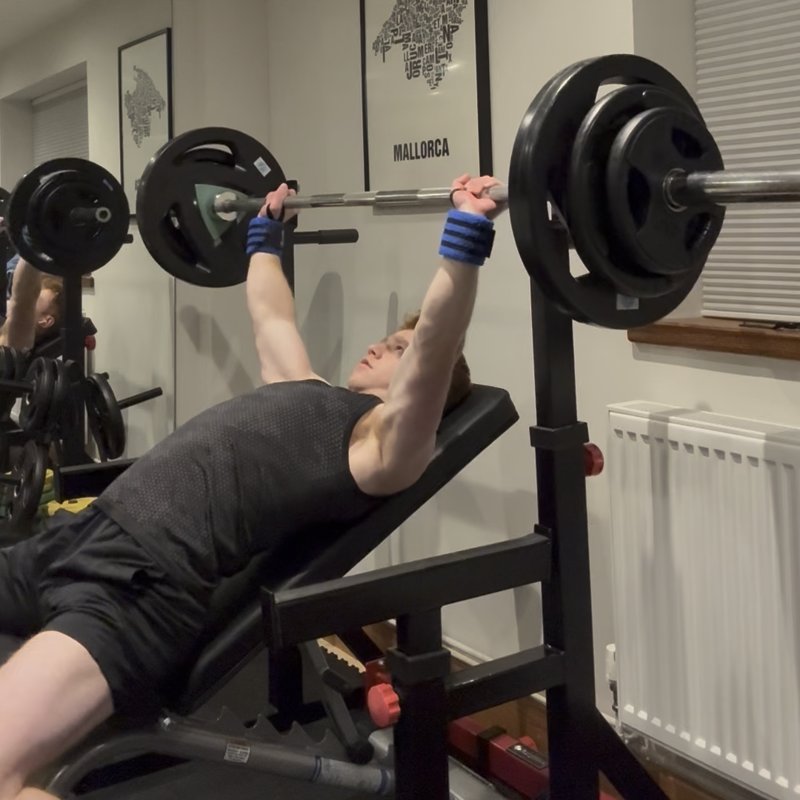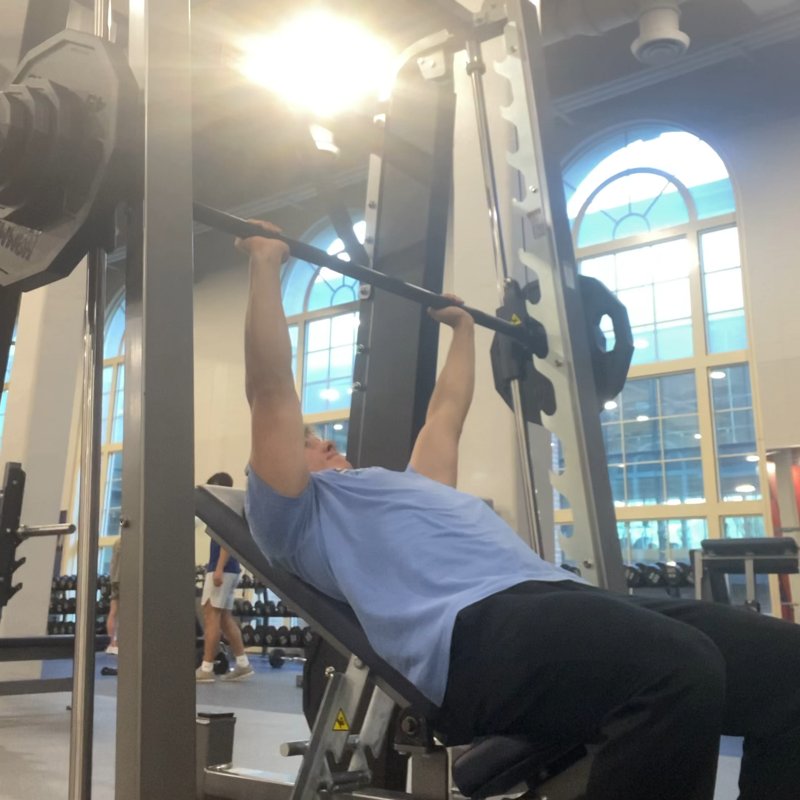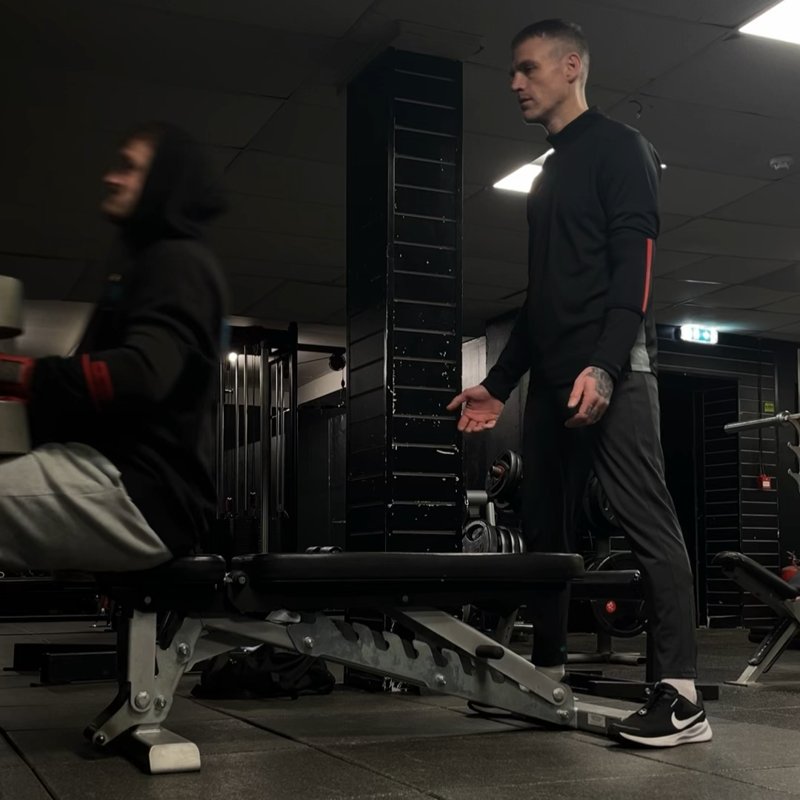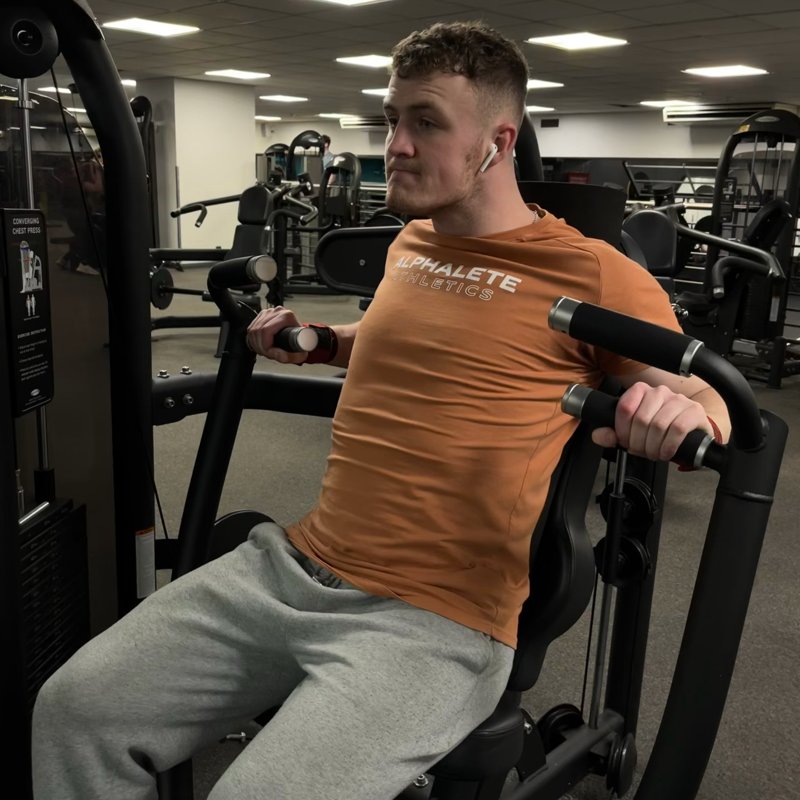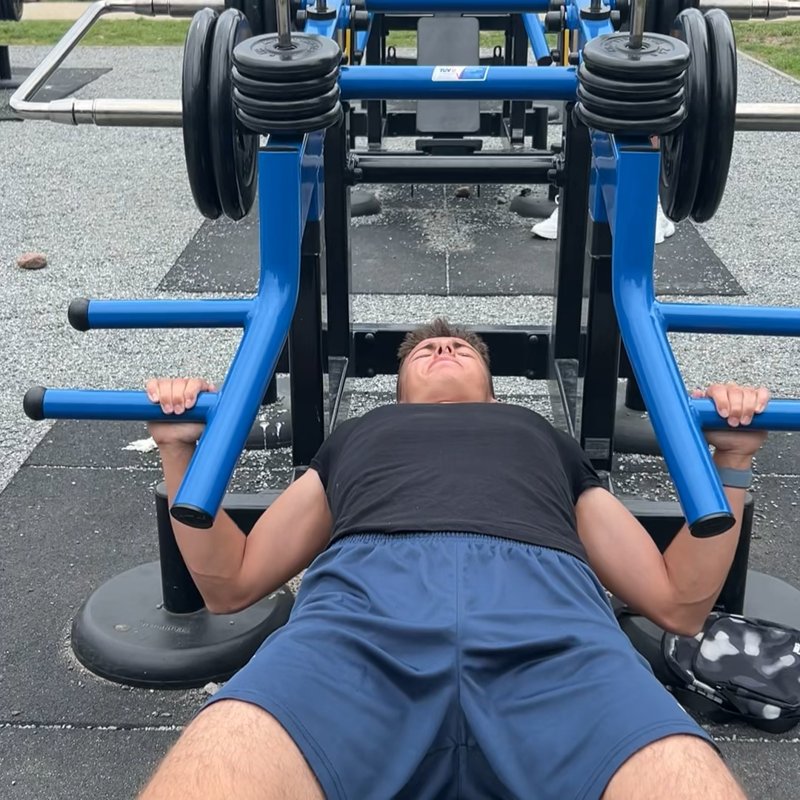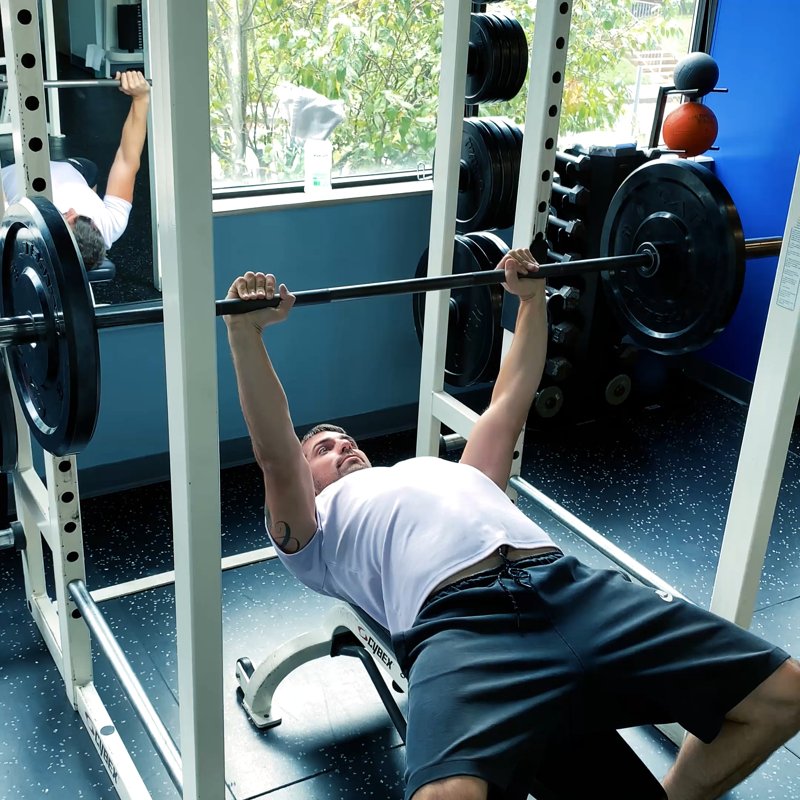Incline Bench Press: The Ultimate Guide
The Incline Bench Press is a compound pressing movement performed on an angled bench that shifts emphasis to the upper chest muscles while still engaging the shoulders, triceps, and other supporting muscles for complete upper body development.
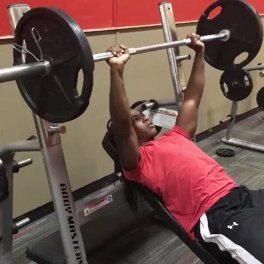
Quick Facts
Key Benefit
Upper chest development and balanced pectoral aesthetics
Primary Muscles
Anterior Deltoids, Pectoralis Major, Triceps
Secondary Muscles
Abdominals, Pectoralis Minor
Equipment
barbell, incline bench
Difficulty
Intermediate
Type
Strength
In This Guide
Ready to master the Incline Bench Press?
Track your progress, see improvements over time, and build strength consistently.
Download GravitusThe Incline Bench Press is a powerful compound movement that brings focus to the often underdeveloped upper chest. By performing the traditional bench press on an angled surface (typically 30-45 degrees), the exercise shifts more tension to the clavicular head of the pectoralis major—the upper portion of the chest—while still engaging the anterior deltoids, triceps, and other supporting muscles. This variation is particularly valuable for athletes and bodybuilders seeking complete chest development, as the flat bench press alone often leaves the upper chest lagging. Beyond aesthetics, strengthening the upper chest has functional benefits for pushing movements that occur at an upward angle. Whether your goal is to develop a more balanced and impressive chest, improve specific sports performance, or simply add variety to your pressing movements, the incline bench press serves as an excellent addition to any upper body training program.
Benefits of the Incline Bench Press
The incline bench press offers several distinct advantages for strength athletes, bodybuilders, and fitness enthusiasts.
Upper Chest Development
Specifically targets the clavicular head of the pectoralis major, which is often underdeveloped compared to the lower and middle portions of the chest.
Shoulder Engagement
Provides greater activation of the anterior deltoids than the flat bench press, contributing to more balanced shoulder development.
Improved Pressing Angles
Develops strength in an upward pressing angle that translates to many athletic movements and everyday activities.
Reduced Shoulder Stress
The incline position can be more shoulder-friendly for some lifters compared to the flat bench press, potentially reducing stress on the shoulder joint.
Aesthetic Balance
Creates a more proportionate and complete chest appearance by developing the upper region, which contributes to the sought-after "shelf" look in the upper chest.
Proper Form & Technique
Starting Position
- Adjust the incline bench to approximately 30-45 degrees (a 30-degree angle targets more chest, while higher angles increasingly engage the shoulders).
- Lie back on the incline bench with your feet flat on the floor for stability.
- Position your eyes directly under the barbell to establish the proper bar path.
- Grasp the barbell with a grip slightly wider than shoulder-width (typically ring fingers on the ring marks).
- Retract your shoulder blades, pulling them down and back to create a stable platform.
- Lift your chest slightly and maintain a natural arch in your lower back.
- Unrack the barbell by straightening your arms, then move it horizontally until it's positioned over your upper chest/lower neck area.
Movement
- Lower the barbell with control toward the upper part of your chest (just below the clavicle).
- Keep your elbows at approximately a 45-75 degree angle relative to your torso—not flared completely out to the sides.
- As the bar approaches your chest, continue retracting your shoulder blades and maintaining your chest position.
- Touch the bar lightly to your upper chest at the bottom position, avoiding bouncing.
- Press the bar upward and slightly backward, following a slight arc that brings the bar over your shoulders at the top position.
- Fully extend your arms at the top while maintaining shoulder blade retraction and core tension.
- Repeat for the desired number of repetitions, keeping the movement controlled throughout.
Key Form Tips
Bar Path
The bar should follow a slight arc, touching the upper chest and ending over the shoulders at the top.
Elbow Position
Keep elbows at a 45-75 degree angle from your torso, not flared out at 90 degrees, to protect shoulders.
Wrist Alignment
Maintain straight wrists with the bar positioned in the heel of your palm, not in your fingers.
Breathing
Inhale during the lowering phase and exhale forcefully during the pressing phase.
Foot Position
Keep feet flat on the floor and use leg drive to enhance stability throughout the movement.
Grip Width
If shoulder discomfort occurs, try a slightly narrower grip than you would use for a flat bench press.
Muscles Worked
Primary Muscles
- pectoralis major: The large chest muscle, with emphasis on the clavicular (upper) portion during the incline press, while the sternocostal (middle and lower) fibers also contribute but to a lesser degree than in a flat bench press.
- anterior deltoids: The front shoulders contribute significantly to the press, more so than in the flat bench press due to the inclined angle.
- triceps: The three-headed muscle on the back of the arm is responsible for elbow extension in the pressing movement.
Secondary Muscles
- pectoralis minor: This muscle along the ribs helps stabilize the shoulder blade and assists in the pressing motion.
- coracobrachialis: A small muscle in the upper arm that assists in stabilizing the shoulder joint during pressing.
- abdominals: The abdominals, obliques, and lower back work isometrically to stabilize the body during the lift.
Common Mistakes and How to Fix Them
Excessive Arch
Arching the back too much negates the incline angle and turns the movement into more of a flat bench press. Fix this by maintaining a natural back position that follows the incline of the bench, keeping your upper back and head in contact with the bench throughout.
Flaring Elbows
Keeping elbows at a 90-degree angle from the torso places excessive stress on the shoulder joints. Instead, tuck the elbows to about 45-75 degrees relative to your body to reduce shoulder strain while still effectively targeting the upper chest.
Bouncing the Bar
Using momentum by bouncing the bar off the chest reduces muscle tension and can lead to injury. Always control the bar through the full range of motion, touching it lightly to your chest before pressing upward.
Incorrect Bar Path
Pressing the bar straight up from the chest rather than following a slight backward arc. The optimal path is to lower the bar to your upper chest, then press up and slightly back so the bar ends over your shoulders at the top.
Using Too Steep an Angle
Setting the bench at angles greater than 45 degrees shifts too much emphasis to the front deltoids. For optimal upper chest development, use an incline between 30-45 degrees, with 30 degrees generally being most effective for chest emphasis.
Incline Bench Press Variations
Equipment Variations
-
Incline Dumbbell Press
Using dumbbells instead of a barbell allows for a greater range of motion and addresses strength imbalances between sides.
-
Smith Machine Incline Press
Provides more stability and allows for focused muscle engagement with reduced need for stabilization.
-
Hammer Strength Incline Press
Uses a machine that follows a fixed path while allowing independent arm movement, providing both stability and unilateral training.
Grip and Technique Variations
-
Close-Grip Incline Bench Press
Using a narrower grip shifts more emphasis to the triceps while still engaging the upper chest.
-
Wide Grip Incline Bench Press
A wider hand position increases chest engagement with less triceps contribution.
-
Paused Incline Bench Press
Incorporating a 1-3 second pause at the bottom of the movement eliminates momentum and increases time under tension.
Frequently Asked Questions
Neither is inherently "better" - they're different exercises that emphasize different portions of the chest. The incline bench press targets the upper chest and involves more front deltoid activation, while the flat bench press engages more of the middle and lower chest fibers. For complete chest development, most training programs should include both variations. If your upper chest is lagging in development, the incline press might temporarily take priority in your program.
Research and practical experience suggest that an incline of approximately 30 degrees is optimal for upper chest development. As the angle increases beyond 45 degrees, the exercise increasingly becomes a shoulder movement with less chest involvement. For variety and complete development, occasionally using different angles between 15-45 degrees can be beneficial, but the 30-degree mark represents a sweet spot for most lifters focusing on upper chest hypertrophy.
Most lifters can incline press approximately 75-85% of their flat bench press maximum. This reduction occurs because the incline position places the chest at a mechanical disadvantage and increases the load on the typically weaker anterior deltoids. The steeper the incline, the greater this strength differential becomes. Don't be discouraged by the lower numbers - the unique stimulus provided by the altered angle is valuable for complete development.
While the incline press does engage the anterior deltoids significantly, it shouldn't completely replace dedicated overhead pressing in a balanced program. The overhead press more comprehensively activates all three deltoid heads (front, side, and rear) and involves different stabilizer patterns. However, for those with shoulder issues that make overhead pressing uncomfortable, a steeper incline press (around 45-60 degrees) can serve as a reasonable alternative that places less stress on the shoulder joint.
Video Demonstrations
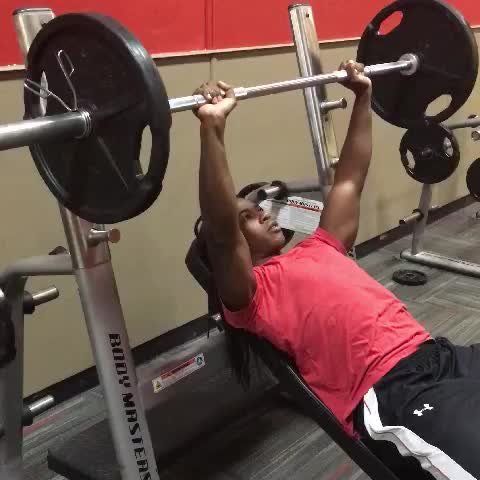
Log in to watch video demonstrations
Login to Watch3 video demonstrations available
Find more video demonstrations in the Gravitus app
Tips from the Community
-

Lower the bar right down below the collar bone and keep elbows at a 90 degree angle.
-

Rp30
Track your progress with Gravitus
Download Gravitus to log your workouts, track your progress, and join a community of fitness enthusiasts.

Helpful Resources
One Rep Max Calculator
Find your one rep max for any exercise without maximal testing. Essential for developing effective strength training programs.
Calculate 1RMWorkout Programs
Follow structured workout programs created by fitness professionals to maximize your strength and muscle gains.
View Programs